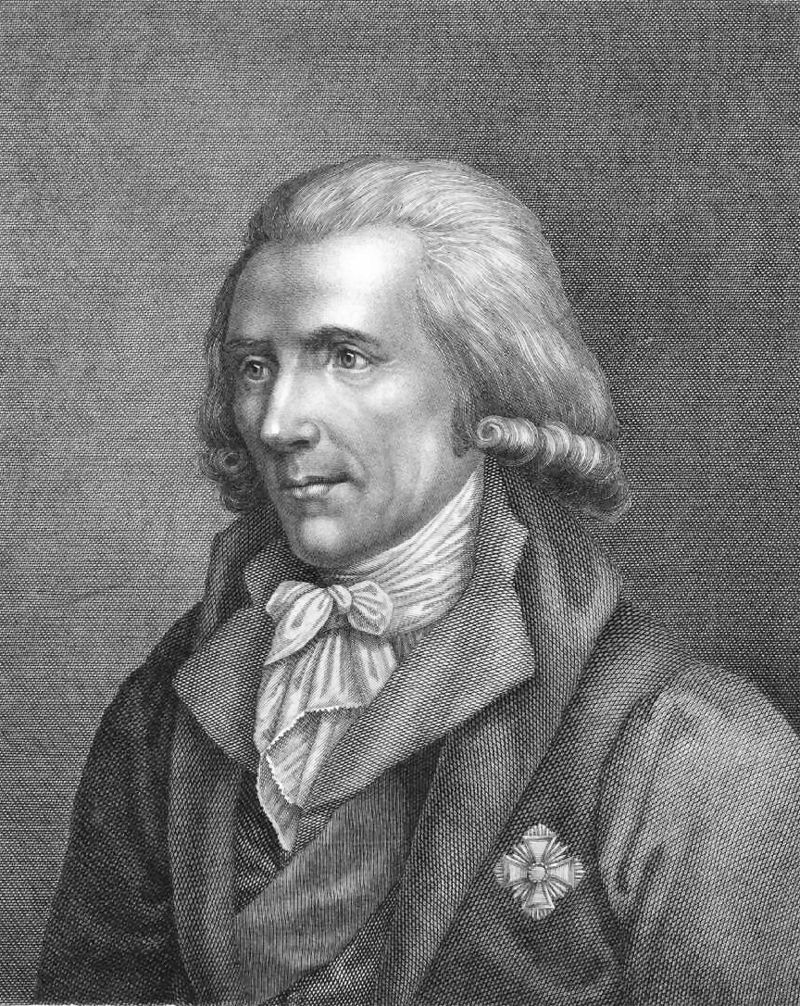 |
Sir Benjamin Thompson, Count Rumford
March 26, 1753 – August 21, 1814
|
Sir Benjamin Thompson, Count Rumford, was an American-born British physicist and inventor whose challenges to established physical theory were part of the 19th century revolution in thermodynamics. He served as lieutenant-colonel of the King's American Dragoons, part of the British Loyalist forces, during the American Revolutionary War. After the end of the war he moved to London, where his administrative talents were recognized when he was appointed a full Colonel, and in 1784 he received a knighthood from King George III. A prolific designer, Thompson also drew designs for warships. He later moved to Bavaria and entered government service there, being appointed Bavarian Army Minister and re-organizing the army, and, in 1791, was made a Count of the Holy Roman Empire.
When the American Revolutionary War began Thompson was a man of property and standing in New England and was opposed to the uprising. He was active in recruiting loyalists to fight the rebels. This earned him the enmity of the popular party, and a mob attacked Thompson's house. He fled to the British lines, abandoning his wife, as it turned out, permanently. Thompson was welcomed by the British to whom he gave valuable information about the American forces, and became an advisor to both General Gage and Lord George Germain.
While working with the British armies in America he conducted experiments to measure the force of gunpowder, the results of which were widely acclaimed when published in 1781 in the Philosophical Transactions of the Royal Society. On the strength of this he arrived in London at the end of the war with a reputation as a scientist.
After 1799, he divided his time between France and England. With Sir Joseph Banks, he established the Royal Institution of Great Britain in 1799. The pair chose Sir Humphry Davy as the first lecturer. The institution flourished and became world famous as a result of Davy's pioneering research. His assistant, Michael Faraday established the Institution as a premier research laboratory, and also justly famous for its series of public lectures popularizing science. That tradition continues to the present, and the Royal Institution Christmas lectures attract large audiences through their TV broadcasts.
Thompson endowed the Rumford medals of the Royal Society and the American Academy of Arts and Sciences, and endowed a professorship at Harvard University. In 1803, he was elected a foreign member of the Royal Swedish Academy of Sciences.
In 1804, he married Marie-Anne Lavoisier, the widow of the great French chemist Antoine Lavoisier, his American wife—the one he abandoned in America upon the outbreak of the American Revolution—having died since his emigration. Thompson separated from his second wife after 3 years, but Thompson settled in Paris and continued his scientific work until his death on August 21, 1814. Thompson is buried in the small cemetery of Auteuil in Paris, just across from Adrien-Marie Legendre. Upon his death, his daughter from his first marriage, Sarah Thompson, inherited his title as Countess Rumford.
-from Wikipedia

No comments:
Post a Comment
Hi Janeites! Thank you for visiting our website. We invite you to comment on our content. Of course, Lady Catherine would believe us all to behave like gentlemen and ladies, so please let us not disappoint her.
Also, please leave comments in English, as only Lady Catherine, had she ever studied a foreign language, would be a great profient enough to read such comments. (Merci! Arigato! Gracias!)